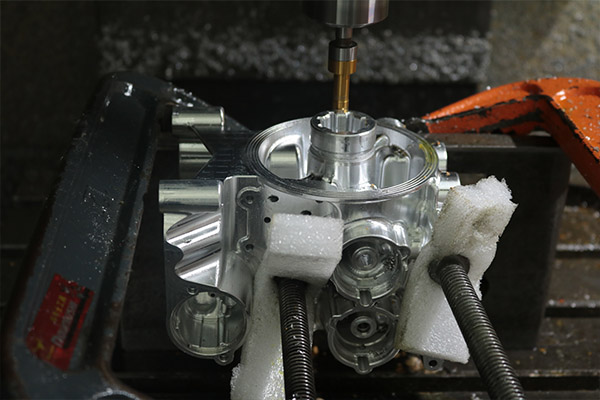Get in touch.
Dear,I will reply in 12 hours. All your message are protected!
Rapid Prototyping Services, Professional manufacturer of CNC Prototyping and 3D Prototyping in China.
CNC (Computer Numerical Control) machining is a widely used manufacturing process known for its precision and versatility. To stay competitive in today's fast-paced industry, optimizing the efficiency of CNC machining operations is crucial. In this article, we will explore various techniques and best practices to accelerate CNC machining, providing insights to enhance productivity and reduce production time.

1.Advanced CAD/CAM Software:
Invest in advanced CAD (Computer-Aided Design) and CAM (Computer-Aided Manufacturing) software to streamline the programming and toolpath generation process. These software tools offer advanced features such as automatic toolpath optimization, simulation capabilities, and efficient nesting algorithms. Utilizing these features can significantly reduce programming time and increase machining efficiency.
2.Tool Library Management:
Maintain a well-organized tool library with predefined tooling parameters, including tool geometry, speeds, feeds, and cutting parameters. Utilize the tool library function in your CAM software to quickly select and apply appropriate tools for specific machining operations. This eliminates the need for manual entry and reduces setup time, improving overall efficiency.
3.High-Speed Machining (HSM):
Implement high-speed machining techniques to reduce cycle times and improve productivity. HSM involves utilizing higher spindle speeds, faster feed rates, and optimized cutting parameters. However, ensure that your machine, tooling, and workpiece are compatible with higher speeds and feeds to maintain cutting accuracy and surface finish.
4.Parallel Processing:
Utilize multiple machines or multiple workstations with synchronized operations to execute machining tasks simultaneously. This approach allows for parallel processing, reducing idle time and maximizing machine utilization. Proper planning and coordination are crucial to ensure smooth workflow and efficient use of resources.
5.Fixture and Workholding Optimization:
Design and optimize fixtures and workholding setups to minimize setup time and maximize machining efficiency. Utilize modular fixturing systems or quick-change setups that allow for rapid workpiece loading and unloading. Implement proper clamping techniques to ensure stability and accuracy during machining, reducing the need for excessive repositioning or realignment.
6.Toolpath Optimization:
Optimize toolpaths to minimize unnecessary tool movements and reduce machining time. Utilize advanced CAM software features such as adaptive toolpaths, trochoidal milling, and optimized stepovers to maximize chip removal rates and minimize tool wear. Additionally, consider optimizing the toolpath sequence to minimize tool changes and tool travel distances.
7.Continuous Process Improvement:
Embrace a culture of continuous improvement by regularly evaluating and refining your CNC machining processes. Monitor and analyze key performance indicators (KPIs) such as cycle times, setup times, and tool changeovers. Identify bottlenecks, inefficiencies, and opportunities for optimization, and implement targeted improvements to enhance overall productivity.
Conclusion:
Accelerating CNC machining operations requires a combination of advanced technology, optimized processes, and continuous improvement efforts. By leveraging advanced CAD/CAM software, managing tool libraries effectively, implementing high-speed machining techniques, optimizing fixturing, streamlining toolpaths, and embracing a culture of continuous improvement, you can significantly enhance the efficiency of your CNC machining operations.
© 2005-2025 Shenzhen Tuowei Model Technologies Co., Ltd. | All Rights Reserved 粤ICP备11096697号